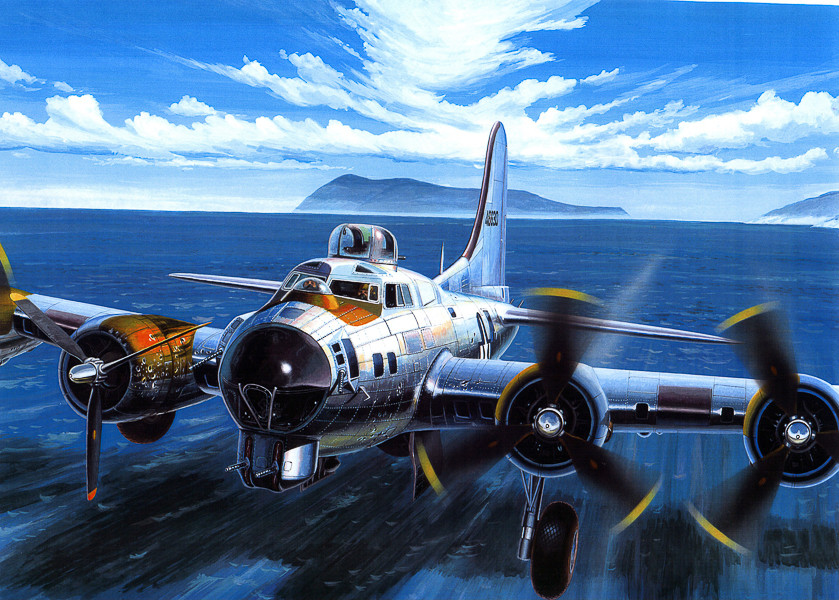
BOEING B-17 G FLYING FORTRESS
DEPTH: 65 - 72 m
SKILL: Expert
Boeing B-17G; heavy bomber; American, 340th Bomb Squadron, 97th Bomb Group
Crashed: 6th November 1944 (anti-aircraft defence)
Coordinates: 43.01722° N, 16.21797° E
Location: island of Vis, cape of Polivalo
Access: 2/5 access is solely by boat (the location is about 150 m from the coast)
Visibility: 4/5 very good, occasionally excellent visibility
Current: 4/5 mostly weak
Flora and fauna: 5/5 varied life on and around the wreck, on the wreck large specimens of fish
HISTORY:
When Borut Furlan, a well-known Slovenian underwater photographer, published the news that Slovenian divers in the sea close to the island of Vis had found an untouched American flying fortress type Boeing B-17G, the news caused a sensation in the diving community. However, when it was discovered that the aircraft was at a depth of 72 m, many were disappointed realising it was unapproachable to most of today’s sport divers.
The completely new and gleaming bomber Boeing B-17G, serial number 44-6630, arrived at the Amendola base in Italy on 3rd November 1944. The mission that awaited them on 6th November was the bombing of Vienna. Vienna was completely covered by cloud, so the formation leader took them to their reserve target - Maribor. Maribor was a significant railway junction and therefore had good anti-aircraft defence. Immediately after dropping their bombs, the aircraft was hit. Engine number three had stopped and the propeller blades were turned edge-forward (to give less resistance to the wind), but engine number two then began to lose oil so it too soon had to be shut down. The explosion heavily injured the co-pilot Ernest Vienneau. With only two working engines and the aircraft losing altitude, their only goal was to return to base by the shortest route. On their way to Vis, the third engine stopped so the crew were doing everything they could to eject needless extra weight and so lighten the aeroplane.
When they started the approach to Vis airfield, a red signal flare was shot from below - “Go Around” – came the signal that the runway was busy, ordering them to circle around the airfield. While the turn was underway, the only remaining engine stopped. They flew over the coast in a steep dive and then the pilot immediately levelled out the aircraft to land it on the surface of the sea. The landing on the calm surface of the sea was soft, without any great impact. When the aircraft came to a stop, the members of the crew pulled themselves out, boarded the rubber dinghy and moved away from the aircraft which continued to float for some twenty more minutes. It sank not far away from the coast, taking the body of the co-pilot with it to the sea bottom. Soon after, some fishermen approached along with one British patrol ship, which saved the crew and transported them to the island.
WRECK CONDITION AND DIVING:
The aircraft is lying on a flat sandy seabed at a depth of 72 metres. Due to the great depth, this is an exceptionally demanding technical dive and so adequate preparation and safety measures are required for it. The location of where it sank is 150 m from the cape of Polivalo on the southern coast of Vis, at the exit from the cove of Rukavac. As the location is open towards the south, during southerly and easterly winds there are large waves which prevent diving. As the aircraft is not elevated from the seabed, it is hard to find even with a precise graphic echo sounder. Anchoring also poses a problem due to the depth and the current. However, once you dive at the correct location and see the aircraft, all efforts are highly rewarded.
Already at a depth of 40 to 45 metres in a clear sea, the outline of this large bomber is visible. The aircraft is leaning on its left set of its landing gear and tail wheel, while the right wing lies on the sand. The nose of the aircraft is crushed from when it hit the seabed, but the pilot’s cockpit and the rest of the aircraft are completely intact. This is the most exciting part of the aircraft. Through the windows the interior is visible – the instrument panel and levers, control yoke, pilot and co-pilot seats, all in the places as they were when the aircraft sank. Two side storage bays for the rubber dinghies are open and the lids are missing. Constantly swimming around them is a shoal of swallowtail sea perches and surmullets.
On the tail of the aircraft there is a turret with two machine-guns. The side window fell away so through the opening the interior is visible. Below the wings is the hiding place for mottled groupers, which in the presence of divers will slowly and carefully retreat into the shadows of the wing. On the crushed nose section two machine-guns can be made out, and on the sand lies a crumpled canvas of one of the parachutes. The engines on the wings along with their propellers are completely overgrown with algae and crustaceans which hang like bunches of grapes. The aircraft offers an unforgettable view to every diver and it’s a shame that due to the depth, the time for divers with open circuit breathing equipment is restricted to only ten to fifteen minutes. Of course, divers with rebreathers have an advantage as their supply lasts longer, so they can spend much more time at the wreck.
Note: The B-17 is considered to be a war grave, and as it is in a protected area diving to it is permitted only through authorised scuba diving centres, of which there are a few on the island of Vis. It is strictly forbidden to remove any object which can be found in or around the aircraft.
The description and illustrations are a courtesy of Danijel Frka and Jasen Mesić. Buy the whole book here: https://shop.naklada-val.hr/product_info.php?products_id=561
Crashed: 6th November 1944 (anti-aircraft defence)
Coordinates: 43.01722° N, 16.21797° E
Location: island of Vis, cape of Polivalo
Access: 2/5 access is solely by boat (the location is about 150 m from the coast)
Visibility: 4/5 very good, occasionally excellent visibility
Current: 4/5 mostly weak
Flora and fauna: 5/5 varied life on and around the wreck, on the wreck large specimens of fish
HISTORY:
When Borut Furlan, a well-known Slovenian underwater photographer, published the news that Slovenian divers in the sea close to the island of Vis had found an untouched American flying fortress type Boeing B-17G, the news caused a sensation in the diving community. However, when it was discovered that the aircraft was at a depth of 72 m, many were disappointed realising it was unapproachable to most of today’s sport divers.
The completely new and gleaming bomber Boeing B-17G, serial number 44-6630, arrived at the Amendola base in Italy on 3rd November 1944. The mission that awaited them on 6th November was the bombing of Vienna. Vienna was completely covered by cloud, so the formation leader took them to their reserve target - Maribor. Maribor was a significant railway junction and therefore had good anti-aircraft defence. Immediately after dropping their bombs, the aircraft was hit. Engine number three had stopped and the propeller blades were turned edge-forward (to give less resistance to the wind), but engine number two then began to lose oil so it too soon had to be shut down. The explosion heavily injured the co-pilot Ernest Vienneau. With only two working engines and the aircraft losing altitude, their only goal was to return to base by the shortest route. On their way to Vis, the third engine stopped so the crew were doing everything they could to eject needless extra weight and so lighten the aeroplane.
When they started the approach to Vis airfield, a red signal flare was shot from below - “Go Around” – came the signal that the runway was busy, ordering them to circle around the airfield. While the turn was underway, the only remaining engine stopped. They flew over the coast in a steep dive and then the pilot immediately levelled out the aircraft to land it on the surface of the sea. The landing on the calm surface of the sea was soft, without any great impact. When the aircraft came to a stop, the members of the crew pulled themselves out, boarded the rubber dinghy and moved away from the aircraft which continued to float for some twenty more minutes. It sank not far away from the coast, taking the body of the co-pilot with it to the sea bottom. Soon after, some fishermen approached along with one British patrol ship, which saved the crew and transported them to the island.
WRECK CONDITION AND DIVING:
The aircraft is lying on a flat sandy seabed at a depth of 72 metres. Due to the great depth, this is an exceptionally demanding technical dive and so adequate preparation and safety measures are required for it. The location of where it sank is 150 m from the cape of Polivalo on the southern coast of Vis, at the exit from the cove of Rukavac. As the location is open towards the south, during southerly and easterly winds there are large waves which prevent diving. As the aircraft is not elevated from the seabed, it is hard to find even with a precise graphic echo sounder. Anchoring also poses a problem due to the depth and the current. However, once you dive at the correct location and see the aircraft, all efforts are highly rewarded.
Already at a depth of 40 to 45 metres in a clear sea, the outline of this large bomber is visible. The aircraft is leaning on its left set of its landing gear and tail wheel, while the right wing lies on the sand. The nose of the aircraft is crushed from when it hit the seabed, but the pilot’s cockpit and the rest of the aircraft are completely intact. This is the most exciting part of the aircraft. Through the windows the interior is visible – the instrument panel and levers, control yoke, pilot and co-pilot seats, all in the places as they were when the aircraft sank. Two side storage bays for the rubber dinghies are open and the lids are missing. Constantly swimming around them is a shoal of swallowtail sea perches and surmullets.
On the tail of the aircraft there is a turret with two machine-guns. The side window fell away so through the opening the interior is visible. Below the wings is the hiding place for mottled groupers, which in the presence of divers will slowly and carefully retreat into the shadows of the wing. On the crushed nose section two machine-guns can be made out, and on the sand lies a crumpled canvas of one of the parachutes. The engines on the wings along with their propellers are completely overgrown with algae and crustaceans which hang like bunches of grapes. The aircraft offers an unforgettable view to every diver and it’s a shame that due to the depth, the time for divers with open circuit breathing equipment is restricted to only ten to fifteen minutes. Of course, divers with rebreathers have an advantage as their supply lasts longer, so they can spend much more time at the wreck.
Note: The B-17 is considered to be a war grave, and as it is in a protected area diving to it is permitted only through authorised scuba diving centres, of which there are a few on the island of Vis. It is strictly forbidden to remove any object which can be found in or around the aircraft.
The description and illustrations are a courtesy of Danijel Frka and Jasen Mesić. Buy the whole book here: https://shop.naklada-val.hr/product_info.php?products_id=561


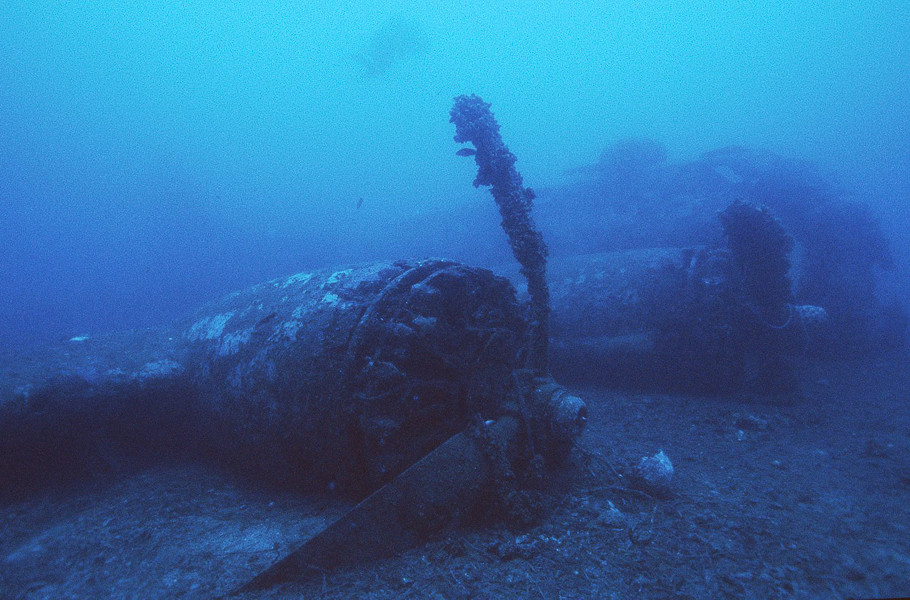

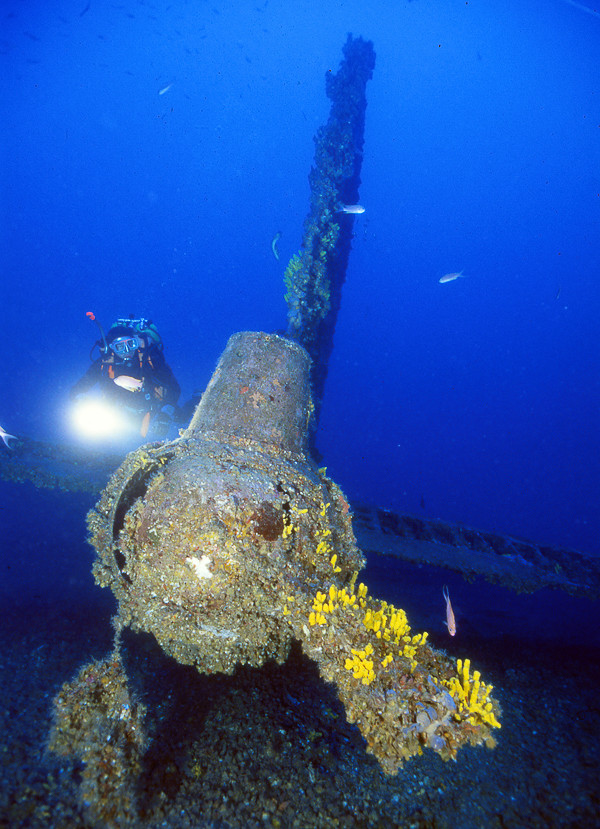
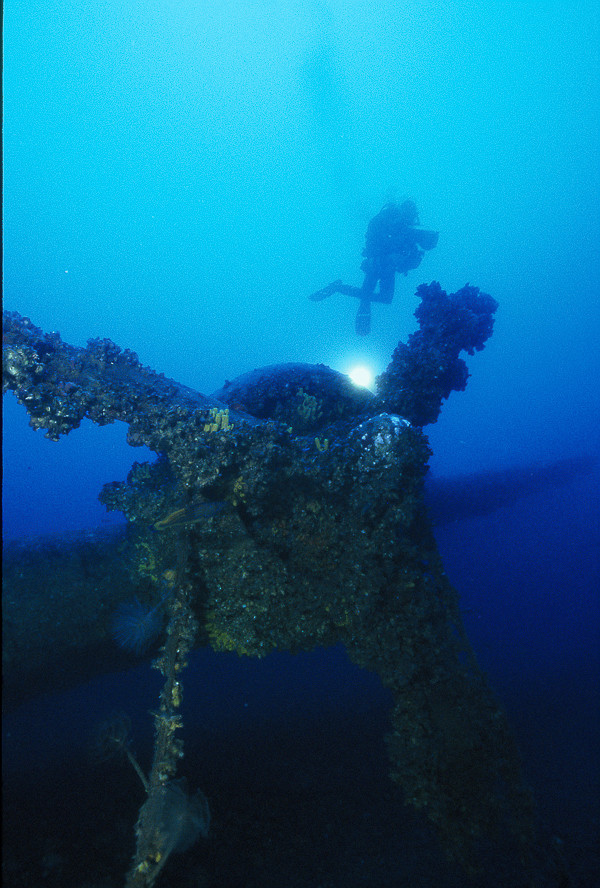
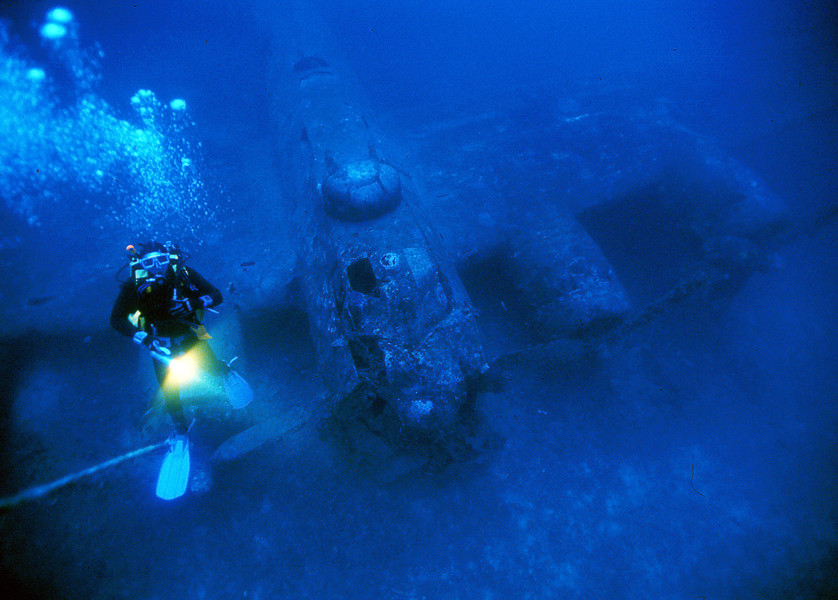
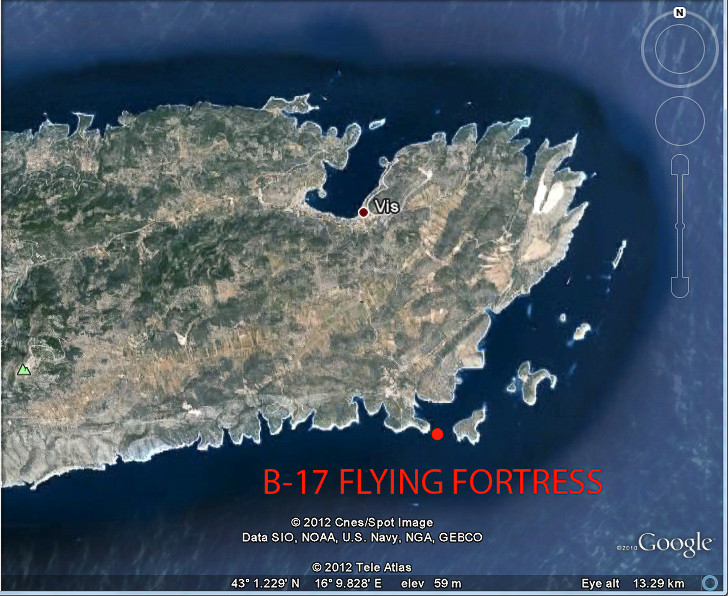
 The investment is co-financed by the Republic of Slovenia and the European Union from the European Regional Development Fund.
The investment is co-financed by the Republic of Slovenia and the European Union from the European Regional Development Fund.  H2O Globe BETA
H2O Globe BETA